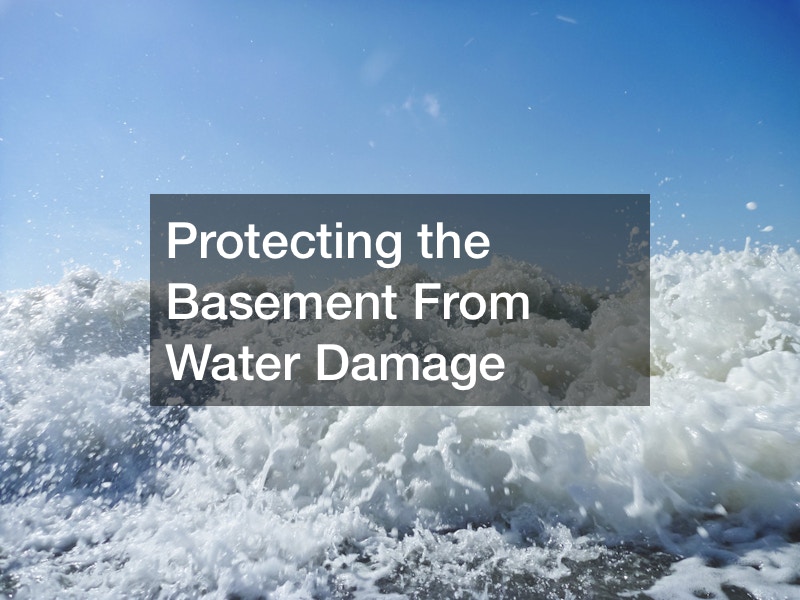
Some basements will be more vulnerable to problems with flooding than others. The shape or the layout of the basement can have an influence on how much water it receives when a flood occurs. If you tend to see “water damage in closet” after even slight floods, it could be because it’s just easier for water to reach that portion of the house. Water damage services can give you advice on changing the setup of your home, which could be helpful for the people who are trying to remodel their houses in a certain way. Researching “what is a mitigation company” or understanding this industry can be valuable for anyone who’s trying to make the right plans.

If water keeps getting inside the basement, there could be issues with the home’s foundation that actually need to be addressed before they contribute to any other disaster, even apart from the flooding. Those fundamental household issues and others could be included in the water damage report that a company gives you. Getting “wet dry restoration” from them could give you the fresh start that you need to make some important changes to your home. If you’re lucky, everything could be different the next time a flood happens.
Basement and foundation waterproofing is something that many American homeowners and public buildings owners are urged to consider and invest in if they live in areas where floods, heavy rain, or high water tables may threaten the basement of a house or building, and basement and foundation waterproofing can prevent a lot of expensive water damage later on, making it a sound investment. Water in a basement can make it difficult to navigate and can break down and erode concrete and wood, and it may also promote mold growth, necessitating mold cleanup work. Just how much water do American homes use, and what may threaten to put water in places where it does not belong?
Water and a House
Basement and foundation waterproofing may be needed if a home gets a lot of leaks, and a lot of water is used by the average American home today. In fact, flushing a toilet once can use up 6.5 gallons of water, and an average family of four will use up 881 gallons of water every week just from toilet use. Similarly, an average, five-minute shower can use up 15-25 gallons of water, and 40 gallons may be used in 10 minutes of shower use. Damaged plumbing can make this worse; a leaking faucet may waste up to 100 gallons of water every day, and leaking pipes can add up. Water leaking into the basement can build up over time if homeowners are not aware of the problem, and this can result in pools of water that can break down the foundation, make some parts of the basement difficult to reach, and cause mold to grow, and mold can cause health problems to people and pets in an affected house. In fact, Farmers Insurance has released data showing that mold-related claims have increased 1,100% in the last decade, and many chronic sinus infections can be attributed to the presence of mold, according to the Mayo Clinic.
Water damage can be expensive to deal with. Statistics show that on average, the cost of dealing with water damage is $6,965 for insurance purposes, and it may cost a lot less to have the basement set up to resist water damage instead, saving money and preventing the headache of having to deal with water and the damage that it does. Basement and foundation waterproofing can be done to help keep water from building up where it does not belong, and this investment means preventing mold growth and keeping the basement dry under all conditions.
What calls for basement and foundation waterproofing? Such measures may be needed for a home that is situated where flash floods may often occur, as well as homes that are in areas that get hurricanes, such as Florida. After all, a lot of damage dealt by hurricanes is caused not just by the strong winds, but rapidly rising water from the heavy rain that can sweep away vehicles and flood homes, so Florida residence can, along with other anti-hurricane construction methods, invest in basement and foundation waterproofing. This can work in any area that expect heavy rains or floods in some parts of the year, and crews can seal up any spaces where water might find ingress into the basement. What is more, a sump pump can be installed to get rid of water that does find its way into the basement. A sump can be set up when channels and pipes and other materials lead water in the basement to a certain area where it can build up. A sump pump will be set up there, and it will draw out this water to keep the basement dry. Those living in flood-prone areas with a lot of rain can invest in a sump and the pump that goes with it.
Water can also be kept out of the home by making sure that all plumbing is in good shape, and making sure that there are no cracks or ruptures in any pipes of the home. Such damage will waste water, drive up the water bill, and flood the basement, none of which will appeal to a homeowner. Plumbers can be contacted if leaks are suspected or spotted, and this will keep the basement dry at all times.

